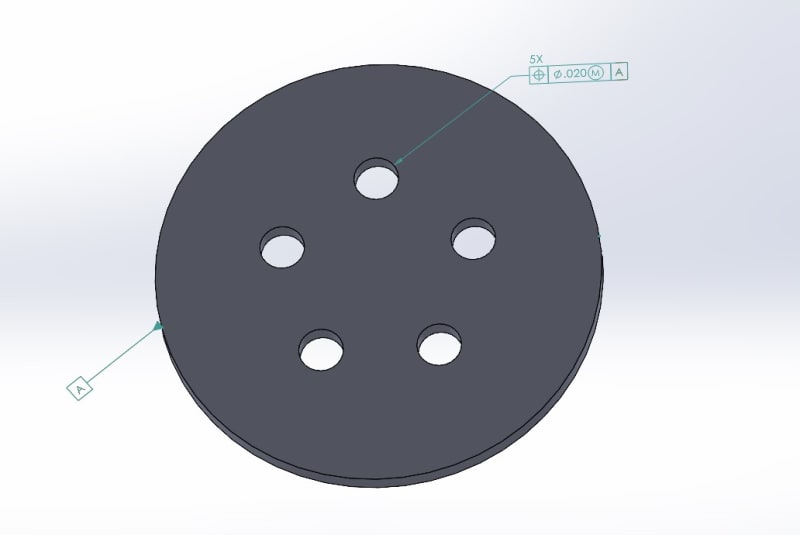sendithard
Industrial
- Aug 26, 2021
- 186
Hope you all are doing well, happy new year.
I'm questioning my understanding on whether this is a rule for a pattern or simultaneous rule. Seen below is a bolt hole pattern, no bottom datum as this is a quick example. There is some datum shift with the A datum, I just forgot to put the symbol in the model.
Because this is a pattern, we know you get your datum shift once, meaning you cannot best fit each hole individually, the moment you find your best fit, the tolerance zones as a pattern must remain there based on the basic angle and basic bolt hole circle diam.
Is this a rule under 'simultaneous' or is this a pattern rule? I know it may not make a bit of difference, but I just want to be able to describe it correct. We have a program that is best fitting each hole independently and there was an issue today and they didn't agree with me that the holes get a one time shot at a best fit, not 5 independent best fits.
Thanks.

I'm questioning my understanding on whether this is a rule for a pattern or simultaneous rule. Seen below is a bolt hole pattern, no bottom datum as this is a quick example. There is some datum shift with the A datum, I just forgot to put the symbol in the model.
Because this is a pattern, we know you get your datum shift once, meaning you cannot best fit each hole individually, the moment you find your best fit, the tolerance zones as a pattern must remain there based on the basic angle and basic bolt hole circle diam.
Is this a rule under 'simultaneous' or is this a pattern rule? I know it may not make a bit of difference, but I just want to be able to describe it correct. We have a program that is best fitting each hole independently and there was an issue today and they didn't agree with me that the holes get a one time shot at a best fit, not 5 independent best fits.
Thanks.




